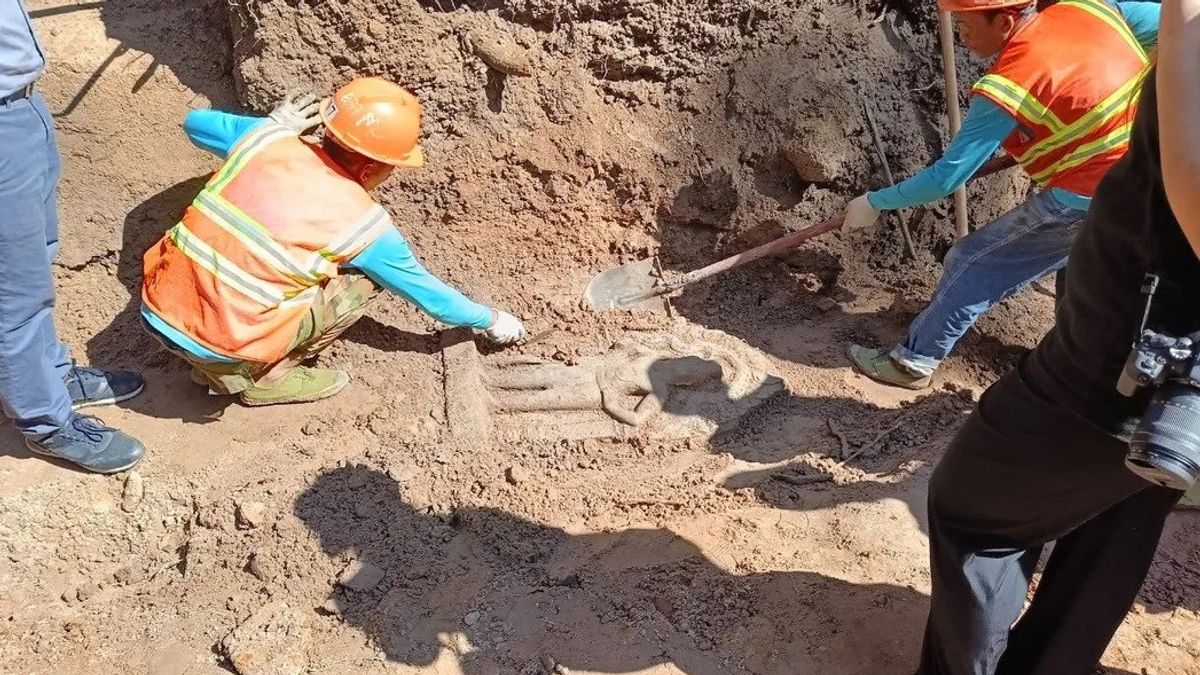JAKARTA - Archaeologists in Cambodia discovered a dozen centuries-old sandstone statues in an "extraordinary discovery" at the Angkor World Heritage Site near Siem Reap City, authorities said late last month.
The statues depicting the so-called "door guards" were found near the northern gate towards the 11th-century Royal Palace in Angkor Thom, the last capital of the Khmer Empire, said Long Kosal, spokesman for the Apsara National Authority, the government agency that oversees the archaeological park, quoted from Daily Sabah November 5.
The team is assessing the ancient gate structure and searching for rocks falling around the portal on the north side of Angkor Thom, one of the four entrances to the compound, when the discovery was made.
The statues depict the guards who stand tall and their size varies from about 1 meter to 110 centimeters, or about 39 to 43 inches.
It was found buried at depths up to 1.4 meters (4.5 feet) and some of them were in excellent condition, each with unique facial hair ornaments, adding to its uniqueness, said archaeologist Sorn Chanthorn.
"Experts believe that this doorkeeper statue is an example of the Khneang Style, which is in line with the 11th century palace construction period," explained the Apsara National Authority.
Angkor Thom is part of the Anggor Archaeological Park, a complex that stretches over an area of about 400 square kilometers (155 square miles), designated as the UNESCO World Heritage Site in 1992.
There are ruins of the capital of the Khmer Empire from the ninth to the 15th centuries, including the temple of Angkor Wat.
The site, located near Siem Reap, is about 200 miles (320 kilometers) northwest of the capital, Phnom Penh, attracting more than 500,000 international visitors in the first half of 2024, according to the Cambodian Ministry of Tourism.
SEE ALSO:
"The archaeological excavation is a collaborative project between Apsara and the Chinese-Kamboja Government Team to Maintain Angkor," said Apsara.
After the discovery of the statues, the archaeological team carefully documented their position before moving them to be cleaned and restored. Authorities said the statues would eventually be returned to their original location.
It is known that many of the treasures of the Khmer culture were looted during a long period of civil war and instability when Cambodia was ruled by the brutal communist regime of the Red Khmer in the 1970s.
The English, Chinese, Japanese, Arabic, and French versions are automatically generated by the AI. So there may still be inaccuracies in translating, please always see Indonesian as our main language. (system supported by DigitalSiber.id)


















